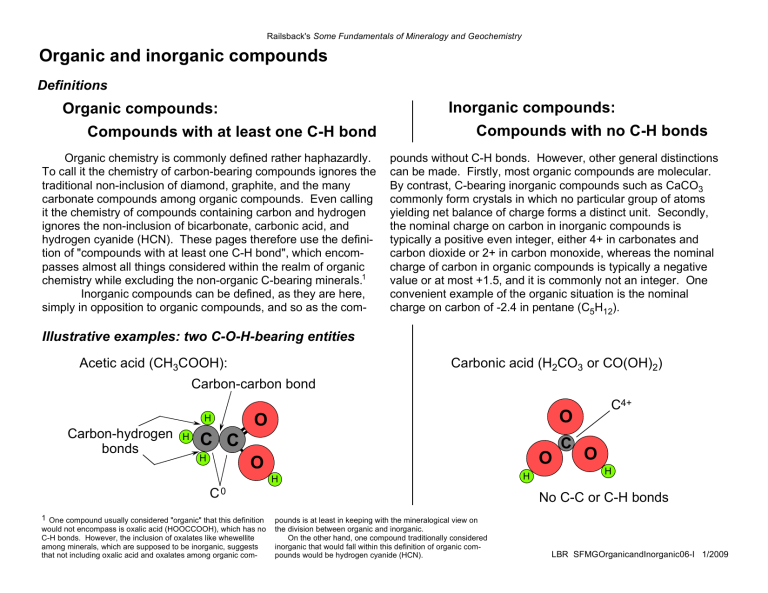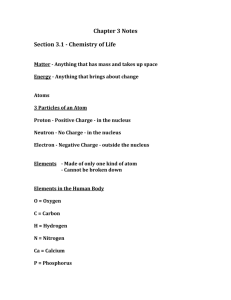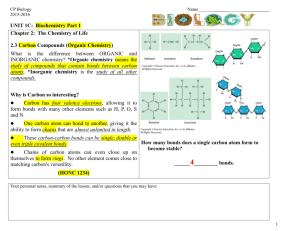Organic and inorganic compounds O O O C C O O
advertisement

Railsback's Some Fundamentals of Mineralogy and Geochemistry Organic and inorganic compounds Definitions Inorganic compounds: Organic compounds: Compounds with at least one C-H bond Organic chemistry is commonly defined rather haphazardly. To call it the chemistry of carbon-bearing compounds ignores the traditional non-inclusion of diamond, graphite, and the many carbonate compounds among organic compounds. Even calling it the chemistry of compounds containing carbon and hydrogen ignores the non-inclusion of bicarbonate, carbonic acid, and hydrogen cyanide (HCN). These pages therefore use the definition of "compounds with at least one C-H bond", which encompasses almost all things considered within the realm of organic chemistry while excluding the non-organic C-bearing minerals.1 Inorganic compounds can be defined, as they are here, simply in opposition to organic compounds, and so as the com- Compounds with no C-H bonds pounds without C-H bonds. However, other general distinctions can be made. Firstly, most organic compounds are molecular. By contrast, C-bearing inorganic compounds such as CaCO3 commonly form crystals in which no particular group of atoms yielding net balance of charge forms a distinct unit. Secondly, the nominal charge on carbon in inorganic compounds is typically a positive even integer, either 4+ in carbonates and carbon dioxide or 2+ in carbon monoxide, whereas the nominal charge of carbon in organic compounds is typically a negative value or at most +1.5, and it is commonly not an integer. One convenient example of the organic situation is the nominal charge on carbon of -2.4 in pentane (C5H12). Illustrative examples: two C-O-H-bearing entities Acetic acid (CH3COOH): Carbonic acid (H2CO3 or CO(OH)2) Carbon-carbon bond H Carbon-hydrogen bonds H O O C C H O O H C0 1 One compound usually considered "organic" that this definition would not encompass is oxalic acid (HOOCCOOH), which has no C-H bonds. However, the inclusion of oxalates like whewellite among minerals, which are supposed to be inorganic, suggests that not including oxalic acid and oxalates among organic com- C4+ H C O H No C-C or C-H bonds pounds is at least in keeping with the mineralogical view on the division between organic and inorganic. On the other hand, one compound traditionally considered inorganic that would fall within this definition of organic compounds would be hydrogen cyanide (HCN). LBR SFMGOrganicandInorganic06-I 1/2009








